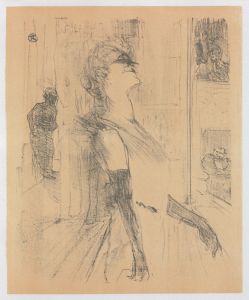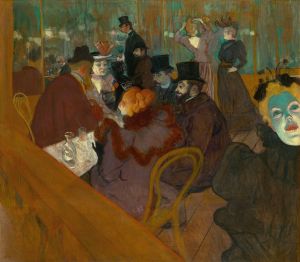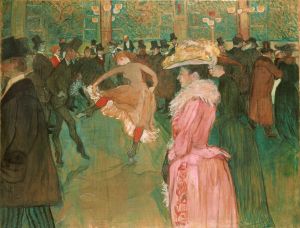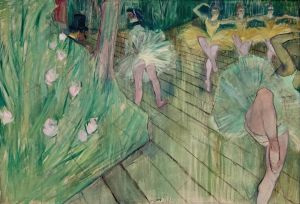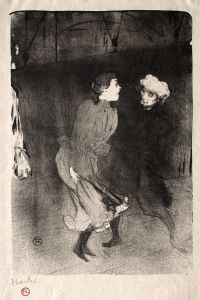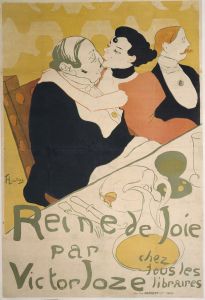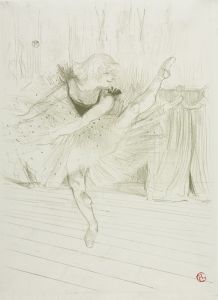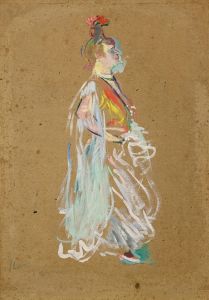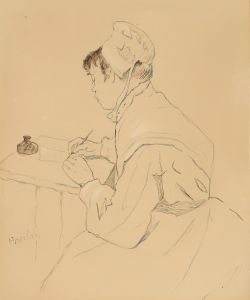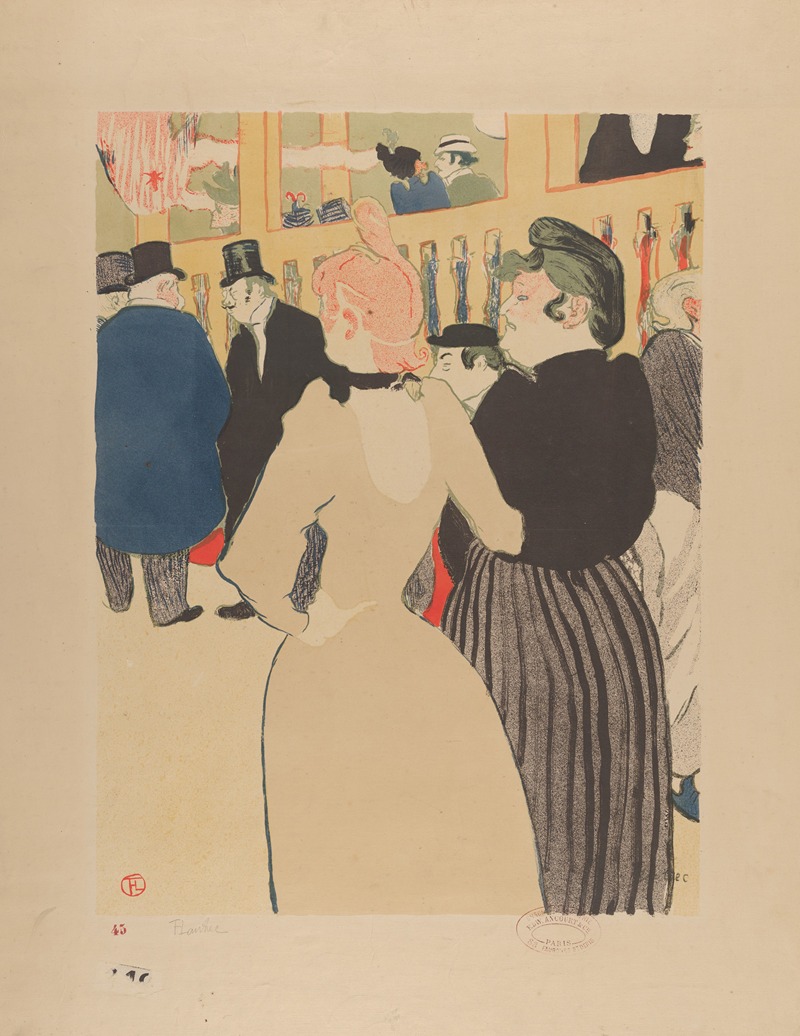
At the Moulin Rouge; La Goulue and Her Sister
A hand-painted replica of Henri de Toulouse-Lautrec’s masterpiece At the Moulin Rouge; La Goulue and Her Sister, meticulously crafted by professional artists to capture the true essence of the original. Each piece is created with museum-quality canvas and rare mineral pigments, carefully painted by experienced artists with delicate brushstrokes and rich, layered colors to perfectly recreate the texture of the original artwork. Unlike machine-printed reproductions, this hand-painted version brings the painting to life, infused with the artist’s emotions and skill in every stroke. Whether for personal collection or home decoration, it instantly elevates the artistic atmosphere of any space.
Henri de Toulouse-Lautrec, a prominent French painter, printmaker, and illustrator, is well-known for his depictions of the vibrant and often bohemian life in late 19th-century Paris. One of his notable works is "At the Moulin Rouge; La Goulue and Her Sister," which captures the essence of the famous Parisian cabaret, the Moulin Rouge, and its lively atmosphere.
Henri de Toulouse-Lautrec was born into an aristocratic family in 1864 in Albi, France. Despite his noble lineage, he became an integral part of the Montmartre district's avant-garde art scene. His physical disabilities, resulting from childhood injuries, led him to focus intensely on his art, allowing him to develop a unique style characterized by bold colors, expressive lines, and an ability to capture the essence of his subjects.
The painting "At the Moulin Rouge; La Goulue and Her Sister" is part of a series of works by Toulouse-Lautrec that depict the Moulin Rouge, a cabaret that opened in 1889 and quickly became a symbol of the lively and often decadent nightlife of Paris. The cabaret was known for its extravagant performances, including the can-can dance, which was popularized by performers like La Goulue, whose real name was Louise Weber.
La Goulue, meaning "The Glutton," was one of the most famous dancers at the Moulin Rouge. She was known for her charismatic and audacious performances, which captivated audiences and made her a central figure in Toulouse-Lautrec's works. In this particular painting, La Goulue is depicted alongside her sister, adding a personal dimension to the portrayal of the cabaret scene.
Toulouse-Lautrec's work is notable for its ability to capture the dynamic movement and energy of the performers and the audience. His use of color and line work creates a vivid and immersive experience, drawing viewers into the bustling world of the Moulin Rouge. The painting reflects not only the entertainment and spectacle of the cabaret but also the personalities and relationships of those who inhabited this world.
The artist's connection to the Moulin Rouge was not merely that of an observer; he was a part of the scene, often socializing with the performers and patrons. This insider perspective allowed him to create works that were both authentic and intimate, offering a glimpse into the lives of the people who defined the nightlife of Montmartre.
Toulouse-Lautrec's paintings, including "At the Moulin Rouge; La Goulue and Her Sister," are celebrated for their innovative approach to composition and their ability to convey the spirit of an era. His work has had a lasting impact on the art world, influencing subsequent generations of artists and contributing to the development of modern art.
Today, Toulouse-Lautrec's paintings are held in high regard and are featured in major museums and collections worldwide. They continue to be studied and admired for their artistic merit and their portrayal of a unique and transformative period in Parisian history. "At the Moulin Rouge; La Goulue and Her Sister" remains a testament to Toulouse-Lautrec's skill as an artist and his deep connection to the vibrant world he depicted.





